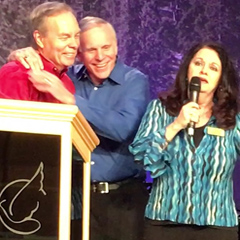How can learning about the law benefit me and what does it have to do with grace? Let me answer your question with another question. How could we understand the value of Jesus placing his blood on the mercy seat unless we first know that a mercy seat existed? Where do we find our information on the mercy seat? In the law.
Taking the mystery out of The Law
Matthew 5:17-20 (Jesus himself said), “Do not think that I came to destroy the Law or the Prophets. I did not come to destroy but to fulfill. For assuredly, I say to you, till heaven and earth pass away, one jot or one tittle will by no means pass from the law till all is fulfilled. Whoever therefore breaks one of the least of these commandments, and teaches men so, shall be called least in the kingdom of heaven; but whoever does and teaches them, he shall be called great in the kingdom of heaven. NKJV
Jesus demonstrates very clearly here that he is not wanting to abolish the law, but to fulfill it.
If Jesus is so clear here, why do we have so many mixed messages about the law? In some Bible verses, the law is portrayed as bad, in some verses it is portrayed as good, in other verses it talks about the bondage of the law and in others it speaks of the law as bringing freedom.
Why is this?????
In English we have one word for snow. Eskimo’s have nine words. In the same way, there are many types of law discussed in the Bible, yet our English translations only give us one definition of the word law. Gaining understanding on the various meanings of the word law will eliminate much of the confusion that swirls around this subject. If you can bear with me for a moment we will dive into the Hebrew definitions of the word law and then we will go into the grace aspect of it all.
Here is a list of the different Hebrew words for law…
1. Torah = Teaching (Many people do not realize that the law is not just a set of rules, but it is also considered a teaching) The Torah is the first five books of the Bible – Genesis, Exodus, Leviticus, Numbers and Deuteronomy (also known as The Books of Moses)
2. Mitzvot (God’s specific 613 Biblical Laws found within the Torah – the first five books of the Bible. (You have read most of these without knowing it. Mitzvah = singular form, Mitzvot = plural form)
3. Tanakh (What Christians call the Old Testament)
4. Oral Torah = the Talmud (Contains doctrinal dissertation of scholars. The Oral Torah shows how God’s law/Torah was to be interpreted and applied for everyday living.)
a. Babylonian Talmud
b. Jerusalem Talmud
5. Seyag = fence laws. Extra manmade laws which were created like a fence around God’s law, so that people would not risk breaking one of God’s laws. This is where legalism entered in and where you see extreme behaviors, such as unscrewing a lightbulb in the refrigerator each Sabbath so as not to kindle a fire. (A Family Guide to the Biblical Holidays, Robin Sampson & Linda Pierce)
6. When the New Testament was written there was no word for legalism, so Paul used the term “under the law”. The word legalism was not invented until approximately 1840 AD (Restoring the Jewishness of the Gospel, David Stern PhD).
The Pharisee’s were the experts on the Oral Torah / Talmud. They often gave man-made laws a higher spiritual authority than the God ordained laws of the Torah. They also used the law to serve themselves rather than serve others.
The legalistic error of the Judaizers was that they insisted that obedience to the Law of Moses was necessary to be saved. The law was never designed to save, just as baptism and communion are not designed to save. Only Jesus saves. Does this mean that baptism or communion are not valuable? Of course not! The same goes for the law. It was not built to save, but that does not mean that it is not important or that we should not be familiar with it.
Up until this point, we have been learning about some of the basics of the law. What does this have to do with grace? How can we see the law and grace working together?
Next week in part 2, we’ll use a couple modern-day examples for visual reference, then explore these questions in the scripture. We will see how detailed and intentional God’s plan was/is and how free we really are in Christ!
~Alison Crawford
Alison Crawford has over 20 years of ministry experience, including women’s events, teaching Hebrew Roots for adult and children’s education, ministering on college campuses, and co-pastoring with her husband Isaac. She absolutely loves her soul mate Isaac and their awesome teenage sons, David and Daniel. www.IACrawfordMinistries.com




